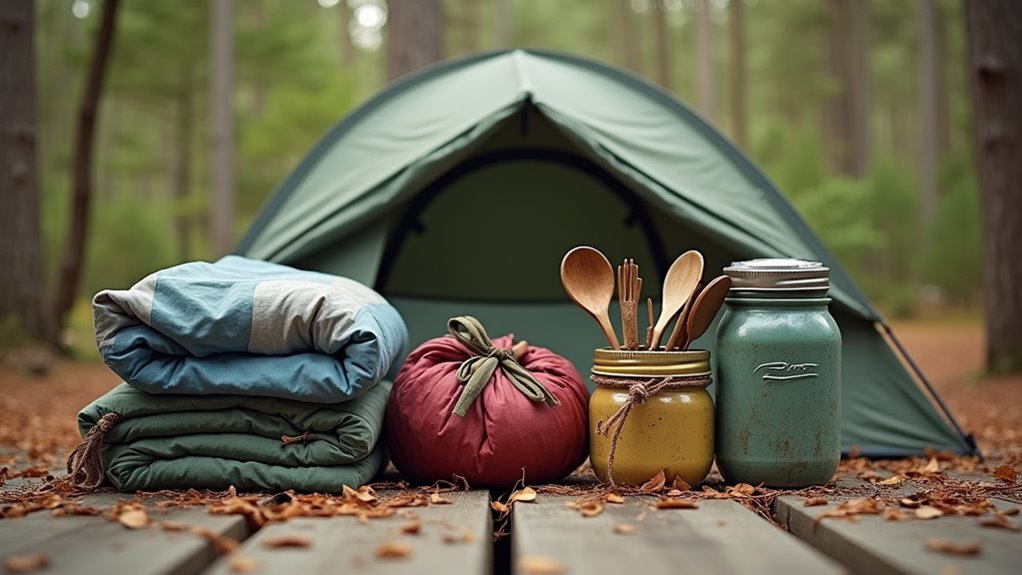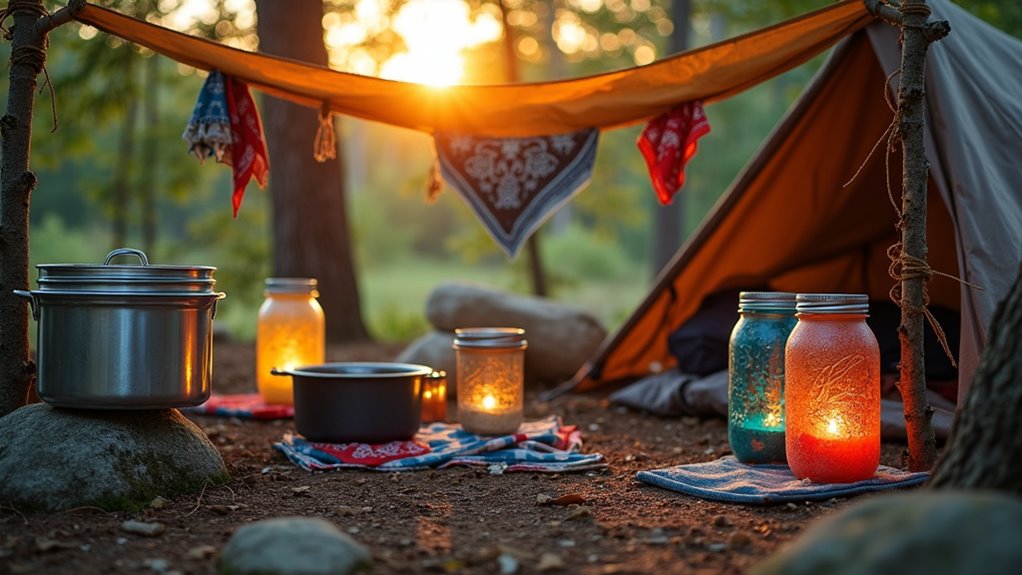Physical Address
304 North Cardinal St.
Dorchester Center, MA 02124
Physical Address
304 North Cardinal St.
Dorchester Center, MA 02124

Find incredible ways to slash your camping gear costs in half using insider secrets that experienced outdoor enthusiasts don't want you to discover.
Your wallet doesn’t have to become a deflated air mattress when you’re gearing up for outdoor adventures. Smart campers know that expensive brand names aren’t the only path to quality equipment that’ll keep you comfortable under the stars. There’s a world of budget-friendly strategies hiding in plain sight—from timing your purchases perfectly to discovering unexpected gear sources that’ll surprise you. You’re about to learn how seasoned outdoor enthusiasts cut their equipment costs in half.

When you’re building your camping gear collection, timing your purchases strategically can slash your costs by 50% or more. Shop end-of-season clearances in late summer and fall when retailers dump inventory. You’ll find sleeping bags, tents, and outdoor clothing at rock-bottom prices.
Strategic timing can cut camping gear costs in half—hunt for end-of-season clearances when retailers liquidate inventory at rock-bottom prices.
Black Friday and post-holiday sales offer massive discounts on big-ticket items like backpacks and camping stoves. Don’t overlook spring cleaning sales at local outdoor shops—they’re purging last year’s models.
Subscribe to gear manufacturers’ newsletters for exclusive discount codes and flash sales. Follow your favorite brands on social media; they often announce surprise deals there first.
Consider buying slightly older models when new versions launch. Last year’s tent performs just as well but costs considerably less than the latest release.
When shopping for essential items like camping lanterns, focus on functionality over fancy features to get the best value for your money.
While premium outdoor brands command top dollar, you don’t need to break the bank to get quality gear that’ll handle your adventures. Start by exploring military surplus stores for durable tents, sleeping bags, and backpacks at a fraction of retail prices.
Hardware stores offer surprising camping solutions—painter’s tarps work as ground covers, rope replaces expensive guylines, and basic tools substitute for specialized gear.
Consider everyday household items: mason jars become lanterns with battery-operated tea lights, old towels serve as camp pillows, and aluminum foil creates windscreens for camp stoves.
Generic brands from sporting goods stores often match name-brand quality without the markup. Don’t overlook dollar stores for camping basics like flashlights, batteries, and storage containers that’ll serve you just fine outdoors.
Many of these money-saving strategies are rooted in classic frugal camping techniques that outdoor enthusiasts have relied on for generations.

Since smart gear choices can dramatically cut your camping costs, focus on items that pull double duty and projects you can tackle yourself. Your smartphone becomes a flashlight, compass, and entertainment center. A bandana works as a towel, pot holder, or first-aid bandage. Duct tape fixes gear and creates emergency repairs.
DIY projects slash expenses considerably. Make fire starters using dryer lint and petroleum jelly. Transform old socks into stuff sacks for organizing gear. Create a camp pillow by stuffing clothes into a pillowcase. Build a simple camp table using a plastic storage container and adjustable legs.
Understanding the overwhelming amounts of available camping gear helps you identify which items truly serve multiple functions versus single-purpose equipment that drains your budget.
You’ll maximize every dollar by choosing versatile gear and crafting solutions at home. These approaches reduce pack weight while keeping more money in your wallet.
You don’t need to break the bank for quality camping gear. Sarah, a single mom, transformed her family’s camping dreams into reality by snagging a $200 tent for $80 during REI’s end-of-season sale and turning mason jars into lanterns. She spent under $300 total instead of $800. Start with strategic timing, embrace creative alternatives, and prioritize multi-purpose items. Your wallet—and your camping adventures—will thank you for thinking smart, not expensive.